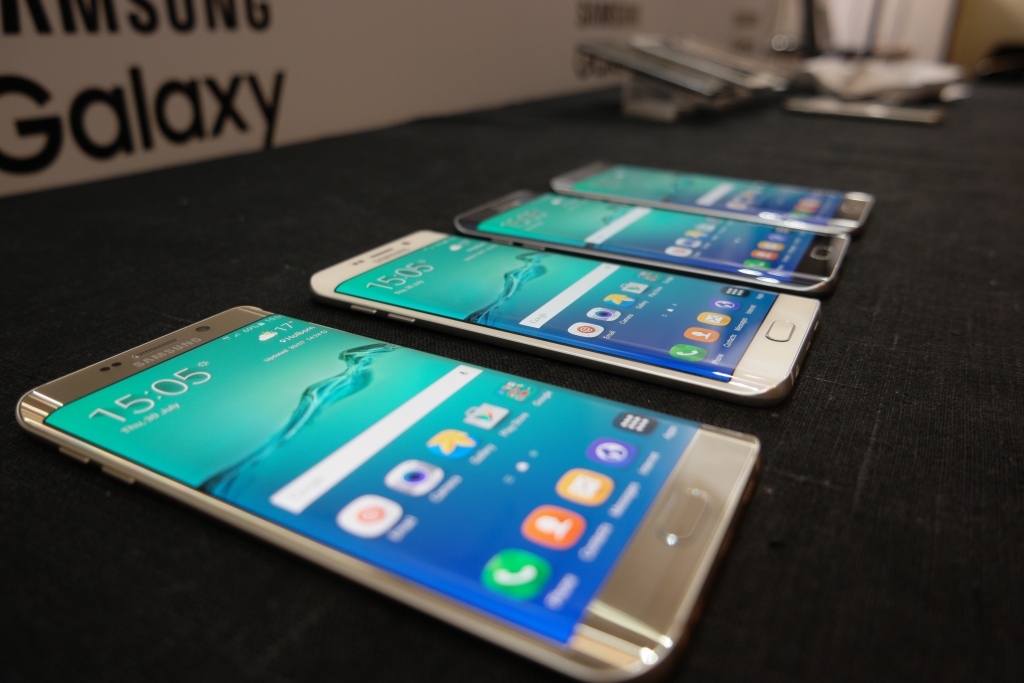After a series of mostly accurate leaks over the past few weeks, including our own exclusive reports, Samsung has finally unveiled its high-end phablets for 2015, the Galaxy Note 5 and the Galaxy S6 edge+. Both these devices feature almost similar specifications – a 5.7-inch QHD Super AMOLED display, 64-bit octa-core Exynos 7420 processor, 4GB of RAM, 32/64/128GB of internal storage, 16-megapixel primary with OIS, 5-megapixel secondary camera, and a 3,000 mAh battery – with only the presence of an S Pen and a curved display differentiating them.
Yes, Samsung has improved a lot in terms of design and build quality, and it can now proudly claim that its smartphones are second to none. However, you must have noticed that Samsung has been moving away from luring hardcore smartphone users. Samsung has removed the ability to hot swap a battery or to expand the storage capacity using a microSD card, at least in its recently released high-end smartphones, be it the Galaxy S6 or the Galaxy Note 5. Those were the features that won Samsung its loyal fan base of hardcore users.
Samsung has used its 2015 smartphone lineup for experiments. No, it’s not a bad thing to do, but it wasn’t necessary for Samsung to use their flagship smartphones as test beds. Instead of removing things like a microSD card slot or a removable battery in a high-end smartphone like the Galaxy Note 5, the company could have done those experiments with some of its mid-range smartphones, except it didn’t. Samsung didn’t even care to check if its customers are okay with the exclusion of some of these features. What’s funny is that mid-range smartphones like the Galaxy A7 actually have a microSD card slot in spite of keeping all the positives of having a metal unibody. Okay, so the UFS 2.0 storage is one reason why the microSD card isn't there on this year's flagships, but for many of the end users, it doesn't make up for the fact that they are limited to the inbuilt storage.
The current situation of Samsung’s smartphone lineup is that buyers who are willing to spend the most are getting screwed the most. Shouldn't the customers paying the most get their hands on the best devices? The last time I checked with other brands, be it smartphone brands or otherwise, the most expensive products are the most feature-packed. It’s like a car brand telling its customer that they will get a super car but with a small fuel tank, and if you want a slightly bigger fuel tank, you’ll have to pay more on top of what you’ve already spent. Why can’t they test these experiments on less important products, and then repeat those tried-and-tested experiments (if they were successful) on flagship devices? Samsung did this with the Galaxy Alpha, and look how it turned out. The device was discontinued well within an year from its initial availability.
There was this rumor that the Galaxy Note 5 could sport a 4,100 mAh battery, and the 3,500 mAh battery on the Galaxy S6 Active had certainly given some consumers hope, who were ultimately disappointed during the official announcement. With the Galaxy S6, Samsung promised that newer technologies like a 14 nm processor, newer Super AMOLED panels, UFS storage, and LP-DDR4 RAM would compensate for a smaller battery, and for some time, we believed those claims. However, in real-world performance, those claims fell flat on their face. My Galaxy S6 edge doesn’t even last till the evening on a single charge. Heck, it can't even run smoothly after the latest update. In our experience, the Galaxy J5 (which we will review soon) had a smoother and more reliable performance than the Galaxy S6 edge.
I am not even going to get into the physical storage vs. cloud storage debate or the removable battery vs. quick charging debate. If I did, the former will always triumph. If Samsung continues to carry out these fatal experiments, it will not be long before its once loyal fanbase jumps ship to other brands like LG or Motorola who are willing to do what consumers demand from them. Why should consumers face the undesired outcome of the company’s experiments, even more so when they pay increasingly premium price tags?







